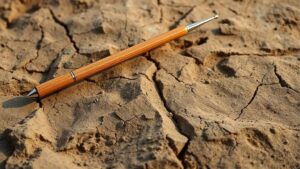Understanding How Gold Moves Through Streams to Spot Prime Locations
Understanding How Gold Moves Through Streams to Spot Prime Locations
Gold prospecting has captivated many adventurers and treasure hunters for centuries. An essential aspect of successful gold searching involves understanding how gold moves through streams and rivers. This article delves into the principles governing gold transport, sediment dynamics, and strategies for identifying prime locations for gold prospecting.
The Basics of Gold Transport
Gold tends to occur in two primary forms: primary and secondary deposits. Primary deposits are found in lode deposits, where gold is embedded in rock formations. In contrast, secondary deposits, often referred to as alluvial deposits, are found in streams, rivers, and floodplains. It is here that the movement of gold becomes significant.
Gold particles, due to their high density, are typically displaced and transported by water. As streams flow, they carry sediments, and gold can be entrained in these flows depending on its size and the energy of the stream. Understanding this transport mechanism is crucial for prospectors.
How Gold Moves in Streams
The movement of gold through streams can be primarily explained through the principles of physics and geology:
- Density and Weight: Gold is approximately 19.3 times denser than water, which means it can settle in pools or low-energy areas, such as bends in rivers or behind large boulders.
- Stream Velocity: The speed of the water flow determines how gold is transported. Faster currents can carry smaller gold flecks, while larger nuggets may settle in calmer areas.
- Hydraulic Sorting: As different-sized particles interact with moving water, heavier minerals like gold are separated and deposited in specific areas, leading to concentrations.
Identifying Prime Locations for Prospecting
Understanding the dynamics of gold movement allows prospectors to effectively identify areas that are likely to bear gold. Key locations often include:
- Inside Bends: Gold particles tend to accumulate on the inside bend of river curves where the current slows.
- Behind Obstacles: Large boulders and tree roots act as barriers to water flow, creating eddies that can trap gold.
- Lower River Sections: As rivers approach their confluence with larger bodies of water, sediment tends to settle, leading to potential gold deposits.
Case Studies and Real-World Applications
Numerous documented instances showcase how these principles successfully guide prospectors. For example, in the Sierra Nevada region of California, gold was discovered in abundance in the riverbeds in the mid-1800s. Prospectors who studied the areas landscape and water flow patterns were significantly more successful than those who randomly searched.
Another case study involves the Klondike Gold Rush in the late 1890s, where miners focused on river intersections and natural barriers that trapped gold. By applying geological knowledge, these prospectors not only found gold but also helped shape modern mining techniques.
Challenges and Considerations
While understanding how gold moves through streams can significantly enhance prospecting efforts, several challenges must be considered:
- Environmental Impact: Gold prospecting may disturb ecosystems and habitats, necessitating adherence to local regulations and sustainable practices.
- Access and Safety: Remote areas can pose access and safety challenges, requiring careful planning and preparation for prospectors.
Conclusion
Gold prospecting requires a blend of knowledge and practical application. By understanding how gold moves through streams, prospectors can locate prime locations, thus enhancing their chances of success. Key strategies involve focusing on bends, obstacles, and lower sections of rivers.
Ultimately, applying these principles with a keen awareness of environmental influences and regulatory considerations can lead to responsible and fruitful gold prospecting adventures.


